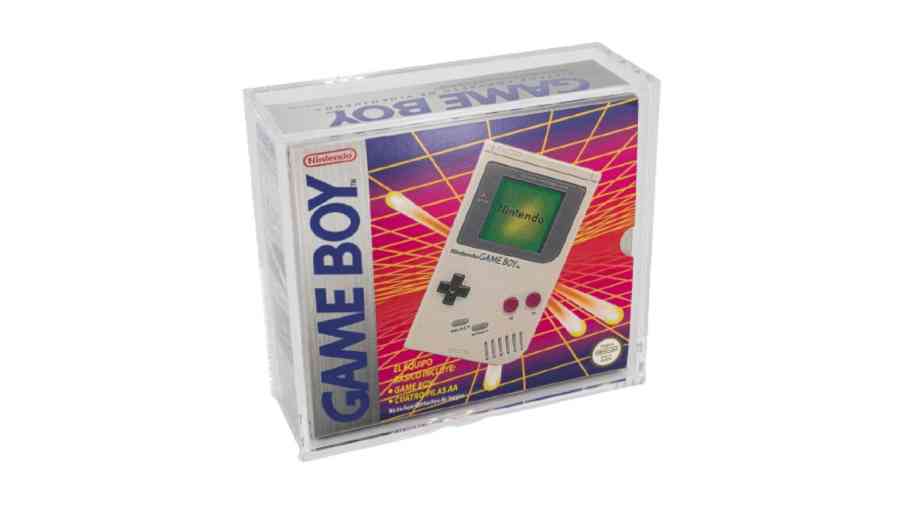Mikhail Gorbachev was getting his suit tailored when the late Robert Maxwell, controversial British media proprietor, stomped in and announced that Nintendo was offering ELORG $5 million for global rights to the now-iconic video game, Tetris. Keeping a straight face, Maxwell, whose business empire included the video game publishing company called Mirrorsoft, announced that capitalism was at the doors of the Soviet Union and if the deal went through, the foundation of the country would ultimately crumble. Till then the world thought these two men got along but their relationship was on the lines of a crocodile and a tiger.
Ultimately, ELORG, the state-owned organisation with a monopoly on the import and export of computer hardware and software in the USSR, made the deal with Nintendo and Tetris became one of the biggest-selling games of all time.
The new Apple TV+ film, Tetris, showcases how a product, an era and a new genre of entertainment came together. It’s the story of how Glasnost had arrived in the world of computer gaming. Not since Pong in the 1970s had a video game made a bigger impact than Tetris in the 1980s. It became not just the top-selling game for personal computers in the ’80s, the Tetris effect was felt on arcades and the then-new category of gaming device, the hand-held Game Boy. Tetris continues to be played in some form or the other. And its history remains complicated.
Building blocks

Taron Egerton (right) and Nikita Efremov in Tetris, now streaming on Apple TV+. Picture: Apple
Henk Rogers (played by Taron Egerton) was leading a small but happy life in Japan with his wife and children while designing video games. At a game expo, he came across a game called Tetris, which was designed by Alexey Pajitnov (played by Nikita Efremov), behind the Iron Curtain.
Pajitnov designed Tetris in 1984 while working for the old Soviet Academy of Science in Moscow. The game had the potential to become a success globally. In the USSR, some considered it a waste of time, like the classic Windows game, Minesweeper, which many offices uninstalled to keep employees productive. Anyway, people like Pajitnov weren’t allowed by the state to sell games, so any deal that was done benefitted the country and ELORG to an extent.
Pajitnov was made to sit around during dealings to act as the public face of his creation. There was a man named Robert Stein who first got a whiff of Tetris and he made the world believe that he had rights to the game. Then Maxwell (played by the brilliant Roger Allam) wanted a piece of the action and so did his son Kevin. Meanwhile, Henk thought he had the rights to the game in Japan.
The story of the rights to the game is far more complicated than the game itself which involves various shaped blocks made up of four segments (tetra) fall one at a time from the top of the screen. The player can rotate it in four different ways when the blocks are dropping as well as move them. The idea is to create horizontal rows of blocks and once a complete line is filled, it will disappear. How long can you go on playing before the screen is filled up with blocks?
Henk, who is competitive but an honest game developer and founder of Bullet-Proof Software (now called Blue Planet Software), thought the game was a perfect fit for Nintendo Game Boy. He even put up his house to take out a loan to get deals in place until he realised the murky story around the game’s rights.
Friends forever

The real Henk Rogers (right) and Alexey Pajitnov. They remain friends and still devoted to Tetris
What he did next was unthinkable — visit Soviet Union on a tourist visa to conduct business with ELORG. The old USSR was dying and corruption was in every corner. The older generation had a tough time adjusting to the changes introduced in the Gorbachev era. Members of the secret service wanted a cut in the deal, even if it meant ELORG agreeing to the lower price offered by Maxwell.
When Pajitnov and Henk first met, the former couldn’t help but be suspicious. Things changed when Henk highlighted the programmer in him and shared his love for BASIC computer programming language and also Pascal. Ultimately, the film becomes a reflection of an unlikely friendship that was born during the final days of the Cold War, celebrated to the song Final Countdown and soaked in countless rounds of vodka.
Everyone knows how the story ended: Henk got the deal done with Nintendo, he got his house back and became a millionaire. The story didn’t end on a greedy note. Henk kept working and eventually helped Pajitnov and his family immigrate to the US in 1991 and they remain the best of friends. It was only in 1996 the two of them could create The Tetris Company.
Henk, who is still active with The Tetris Company, spends a lot of time on philanthropic endeavours and sustainability-related companies, especially Blue Planet Foundation, which he founded in 2007 in Hawaii. In 2015, the foundation led the campaign to make Hawaii the first state in the US with a 100 per cent renewable energy law.
Today, Tetris is included in a MoMA Applied Design collection and it is subject of an annual World Championship competition. The director, Jon S. Baird, has taken some liberty from the original flow of events, like introducing a car chase in Moscow, which has been cleverly showcased. Yet, no amount of distraction takes the camera away from the turmoil that was eating up USSR and also how Henk proved to be a mensch. It’s one of those rare films that makes one want to get into a Tetris trance.
TETRIS TIMELINE

1984: Tetris is born in Moscow. Russian scientist Alexey Pajitnov develops the very first version of Tetris on an Electronika 60. 1985: Tetris is ported to the IBM PC and quickly spreads throughout the Soviet Union.
1987: Tetris launches on PCs in North America and Europe — the first step in its global expansion beyond the Soviet Union. 1988: Video game designer and publisher Henk Rogers discovers Tetris at a Las Vegas tradeshow and is instantly hooked on the game. Soon after, Henk’s company, Bullet-Proof Software, releases Tetris on the PC and Nintendo Famicom in Japan. It becomes a “software blockbuster”, selling over two million copies.
1989: Henk Rogers meets Alexey Pajitnov for the first time, and they immediately become friends. Also, Henk secures the handheld rights to Tetris. He then licenses those rights to Nintendo.
1995: Henk establishes Blue Planet Software, which becomes the exclusive agent for the Tetris brand.
1996: The Tetris Company is formed, and becomes the exclusive source of all licenses to Tetris.
2007: Alexey Pajitnov receives the First Penguin Award at the Game Developers Conference. Tetris is widely recognised as the game that gave birth to the casual games industry
